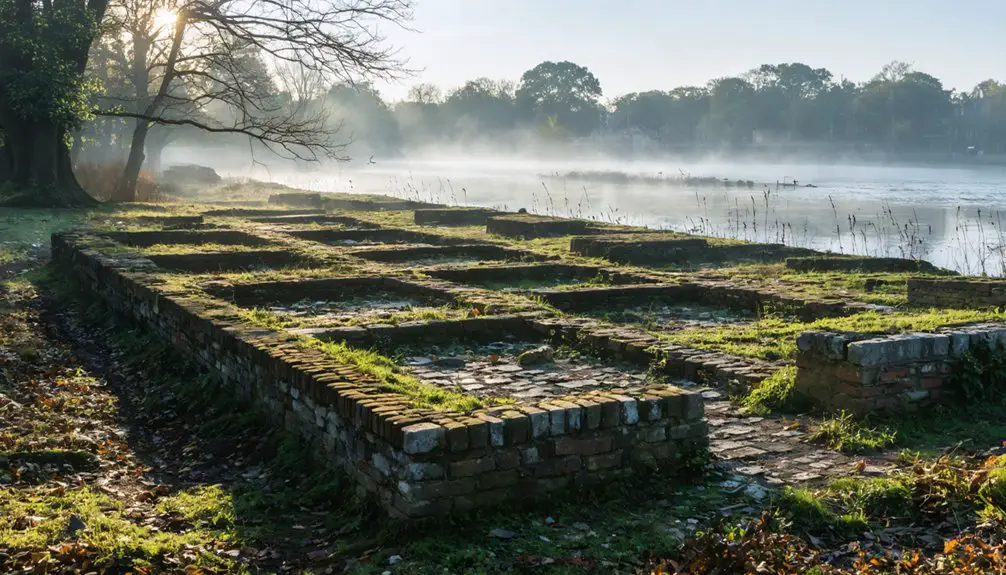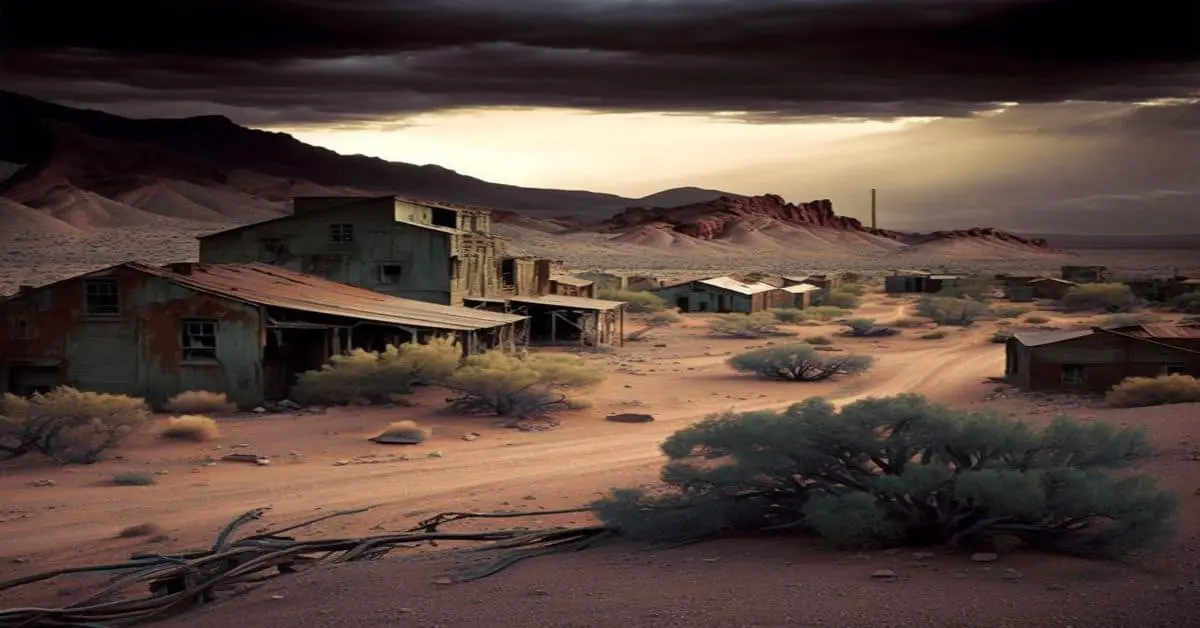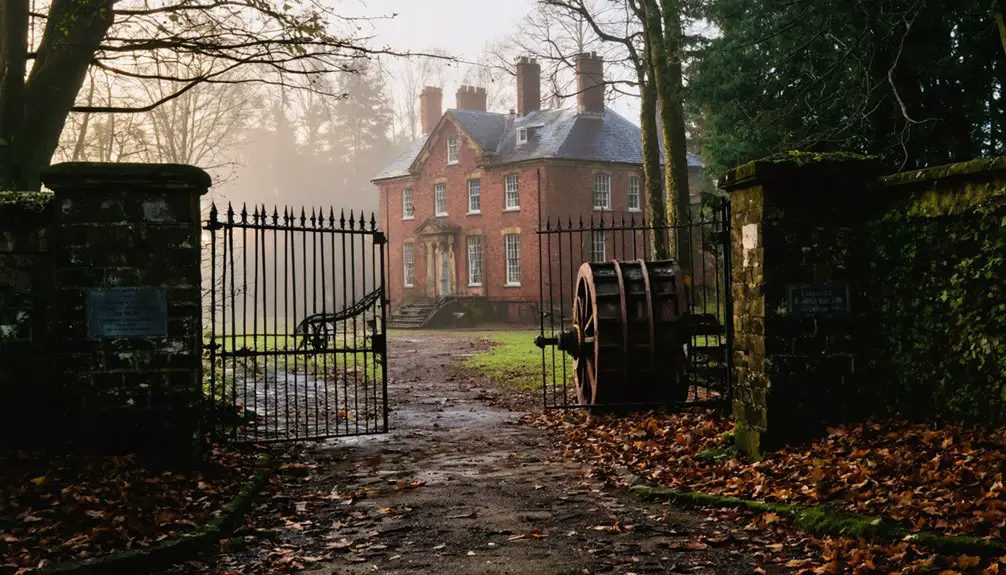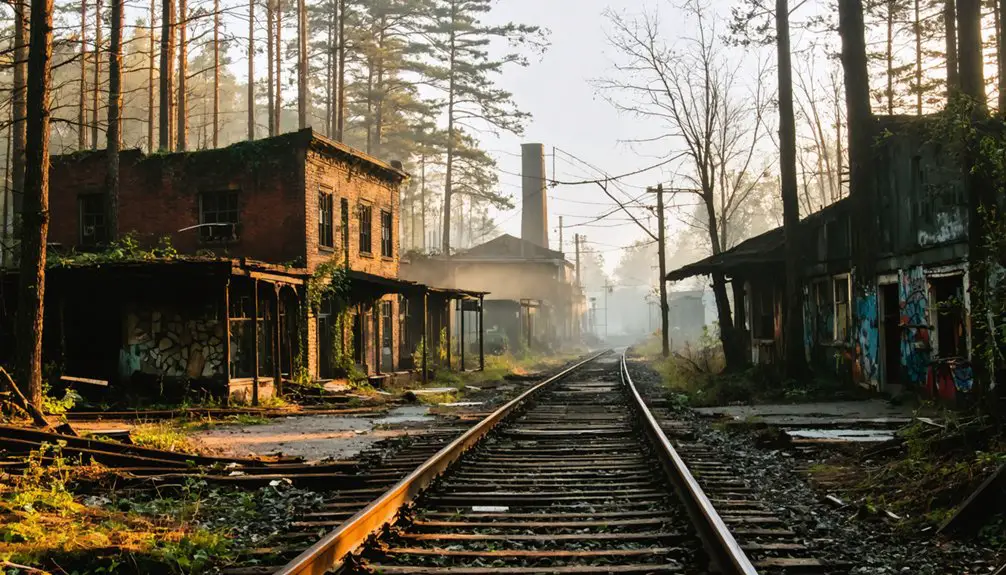You’ll find Raritan Landing’s ruins in Piscataway, New Jersey, where a thriving colonial port once stood along the Raritan River. From 1720-1776, this strategic trade hub housed 70 structures and over 100 residents before British forces decimated it during the Revolutionary War. Archaeological excavations since 1979 have uncovered ceramic artifacts and structural remains, while the preserved Cornelius Low House and Metlar-Bodine House offer tangible glimpses into this vanished maritime community’s complex past.
Key Takeaways
- Raritan Landing was a thriving colonial port town that became abandoned after British occupation and destruction during the Revolutionary War.
- Only two original structures survive today: the Cornelius Low House and Metlar-Bodine House, marking the ghost town’s former location.
- Archaeological excavations since 1979 have revealed remnants of approximately 70 structures that once formed this bustling river trade community.
- The settlement’s decline began when wealthy merchants relocated to higher ground following wartime damage and flooding issues.
- Modern urban development surrounds the historic district, though archaeological evidence preserves the ghost town’s colonial maritime legacy.
The Rise of a Colonial Port Town (1700-1740)
As maritime trade emerged along colonial waterways in the early 1700s, Raritan Landing established itself as a strategic port settlement at the furthest navigable point of New Jersey’s Raritan River. By 1720, you’d have witnessed the rise of colonial commerce through newly constructed warehouses and merchant facilities, transforming the landing into a bustling trade hub. Local farmers transported grain, timber, and livestock using the Great Road Up Raritan to reach the port.
The port’s architecture evolved rapidly between 1700-1740, with approximately 70 structures housing over 100 residents. You’d have found a diverse commercial landscape of warehouses, blacksmith shops, and cooper shops along Landing Lane. The location served as a vital hub for inland trade, facilitating imports and exports throughout the Raritan Valley.
The settlement attracted traders, merchants, and skilled craftsmen rather than farmers. Notable colonial residences, like the Edward Antill House and Cornelius Low House, showcased the growing prosperity of this strategic maritime gateway.
Life Along the Raritan River: Trade and Community
Daily life at Raritan Landing revolved around the rhythms of river trade and tide schedules. You’d find merchants and traders orchestrating river commerce as sloops navigated the Raritan during high tide, connecting inland farmers to coastal markets.
The strategic port handled grain, produce, and supplies through a network of warehouses dating to 1720. The port featured twenty to thirty houses where colonial residents conducted their daily business.
Community dynamics centered on about 100 inhabitants by 1740, with interconnected families like the Bodines and Lows shaping the social fabric. You’d see a clear socioeconomic divide – wealthy merchants built mansions on elevated bluffs while workers lived in modest homes near the landing.
A stratified society emerged at Raritan Landing, where wealthy merchant families in hilltop mansions lorded over workers near the docks.
Artisans’ shops and trade services lined Landing Lane, supporting the bustling port operations. This mercantile ecosystem thrived until newer transportation methods emerged, gradually transforming the working port’s character.
Revolutionary War Impact and Early Decline
The British and Hessian occupation of Raritan Landing from December 1776 to June 1777 marked a devastating turning point in the settlement’s history.
You’ll find evidence of systematic war damage throughout the port town, where enemy troops conducted aggressive raids, burning buildings and looting property. This military assault forced residents to abandon their homes, creating widespread community disruption.
While some inhabitants attempted to return post-war, the scale of destruction proved overwhelming. The combined effects of wartime devastation and subsequent flooding made recovery nearly impossible. The destruction was so severe that nearby Cornelius Low House still bears witness to the damage inflicted during this turbulent period.
You can trace the settlement’s decline through historical records, as wealthier merchants relocated to higher ground rather than rebuild. The arrival of the Delaware and Raritan Canal in 1834 further diminished the port’s relevance, leading to its eventual abandonment by 1870. The introduction of seaworthy steamboats in 1807 had already begun to limit trade at the shallow-water port.
Archaeological Discoveries and Hidden History
Modern archaeological excavations have uncovered remarkable evidence of Raritan Landing’s buried maritime legacy, beginning with Rutgers University’s groundbreaking work in 1979.
Advanced techniques like ground-penetrating radar revealed a complex settlement where merchants, slaves, and tradespeople once thrived. Through ceramic analysis, archaeologists discovered shifting trade patterns and cultural identities, particularly in the community’s evolving independence from New York City merchants. The discovery of ceramic trade patterns helped archaeologists understand the diminishing relationships between local traders and New York investors.
You’ll find the social structure reflected in everyday artifacts now displayed at East Jersey Olde Towne, telling stories of diverse colonial life along the Raritan River. Only two historic houses remain as tangible remnants of this once-bustling port town.
The site’s expansion in 1984 protected more historically significant areas, while excavations during Route 18’s extension preserved essential evidence of this dynamic port community before it vanished beneath modern development.
Modern Legacy and Historic Preservation
Despite being buried beneath layers of urban development, Raritan Landing’s historic legacy endures through preserved structures and ongoing archaeological documentation.
You’ll find the Cornelius Low House and Metlar-Bodine House standing as symbols of the town’s historical significance, both listed on state and national historic registers since the 1970s.
Modern infrastructure projects have revealed archaeological evidence that enriches our understanding of this colonial port town.
The bustling community once served as an inland port settlement until its decline around 1870.
Similar to how visitors explore ghost towns like Ong’s Hat in the Pine Barrens, you can explore the site’s heritage amid Rutgers University grounds and New Brunswick’s cityscape.
Through careful preservation efforts, you can explore the site’s heritage amid Rutgers University grounds and New Brunswick’s cityscape.
Local historians and preservationists actively protect remaining historic elements while maintaining public accessibility.
The historical district coexists with contemporary roadways, demonstrating how urban growth and heritage conservation can balance competing needs in land management.
Frequently Asked Questions
What Was the Average Property Value of Houses in Raritan Landing?
A million historians have tried, but you can’t determine exact property values since historical records don’t show concrete prices. Property trends suggest merchant mansions had higher worth due to their historical significance.
How Many Ships Could Dock Simultaneously at Raritan Landing’s Port?
You’ll find the shipping capacity at this colonial port was modest, with port facilities likely accommodating fewer than 10 vessels simultaneously due to river constraints and limited wharf infrastructure.
What Crops Were Primarily Grown by Local Farmers Around Raritan Landing?
You’d find vast fields dominated by wheat, grain, and corn, where farmers used crop rotation and innovative farming techniques to produce enough staples for both local needs and lucrative overseas markets.
What Were the Most Common Diseases Affecting Raritan Landing’s Colonial Population?
You’d have faced deadly smallpox outbreaks, persistent malaria from mosquito-filled wetlands, and infectious tuberculosis. Measles and dysentery also struck frequently, spreading rapidly through crowded colonial settlements.
How Did Native American Communities Interact With Raritan Landing Settlers?
You’d think early encounters would’ve been hostile, but Native Americans actually maintained peaceful trade relationships and cultural exchange with settlers, sharing river routes, agricultural knowledge, and economic partnerships.
References
- https://jerseydigs.com/ghost-towns-in-nj/
- http://www.hiddennj.com/2014/09/history-under-river-road-vanished-town.html
- https://en.wikipedia.org/wiki/Raritan_Landing
- https://www.onlyinyourstate.com/experiences/new-jersey/nj-ongs-hat
- https://uncoveringraritanlanding.podbean.com
- https://orb.binghamton.edu/cgi/viewcontent.cgi?article=1203&context=neha
- https://www.hmdb.org/m.asp?m=221260
- https://www.metlarbodinehousemuseum.org/rosshall
- http://freepages.rootsweb.com/~grannyapple/genealogy/LABOYTEAUX/RaritanLanding-LaBOYTEAUXs.html
- https://www.revolutionarywarnewjersey.com/new_jersey_revolutionary_war_sites/towns/piscataway_nj_revolutionary_war_sites.htm



